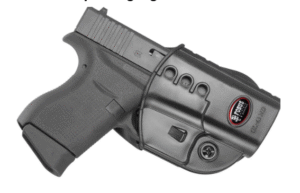
In high-stress situations, rapid access to a firearm can be critical for personal safety and effective self-defense. Selecting the right carrying system plays a pivotal role in ensuring quick and reliable firearm deployment. Among the options available, OWB gun holsters have gained significant recognition for their design and accessibility. Positioned outside the waistband, these holsters offer shooters a balance of comfort, stability, and speed, making them a preferred choice for law enforcement officers, security personnel, and responsible firearm owners who prioritize immediate accessibility.
Advantages of OWB Gun Holsters
Enhanced Draw Speed
One of the primary benefits of OWB gun holsters is the improved draw speed they provide. Because the firearm sits outside the waistband, it is more exposed and easier to reach compared to concealed or inside-the-waistband designs. This positioning reduces the time needed to draw the weapon, which can be crucial during defensive encounters where seconds matter.
Comfort During Extended Wear
OWB holsters are generally more comfortable for extended wear. The positioning outside the waistband distributes the weight of the firearm over a larger area of the body, reducing pressure on the hips and lower back. Many models feature adjustable retention systems, allowing users to find the optimal balance between accessibility and security. This comfort is especially valuable for professionals who wear firearms for long shifts.
Versatility in Carry Options
OWB gun holsters offer flexibility in how they are worn. They can be positioned on the hip, behind the hip, or even along the appendix area, depending on the user’s preference and body type. This versatility allows for tailored solutions that accommodate different firearms, clothing styles, and tactical requirements. Some OWB holsters also come with modular attachment options, making them compatible with belts, MOLLE systems, or tactical rigs.
Retention and Security Features
A critical factor in firearm safety is retention. OWB holsters often incorporate multiple retention mechanisms, such as thumb breaks, adjustable tension screws, or locking devices. These features ensure that the firearm remains securely in place during movement while still allowing for a swift draw when necessary. The combination of accessibility and retention makes OWB holsters particularly suitable for high-intensity environments where both speed and security are essential.
Material and Build Quality
Durable construction is another hallmark of OWB gun holsters. Manufacturers typically use materials like Kydex, reinforced polymer, or high-quality leather to provide a robust shell that resists wear, retains shape, and offers consistent performance. The choice of material can affect comfort, retention, and aesthetics, with some shooters preferring the classic look of leather, while others prioritize the lightweight and precise fit of synthetic options.
Training and Muscle Memory
Consistent training is essential for effective firearm use, and OWB gun holsters facilitate better muscle memory development. The consistent placement and open access of the firearm allow users to practice drawing and reholstering with reduced friction. Over time, this repetitive motion builds reflexive response skills, which are invaluable during high-pressure encounters.
Suitability for Different Firearms
OWB holsters are available for a wide range of firearm models, from compact pistols to full-sized handguns. This adaptability ensures that individuals can find a holster tailored to their specific weapon, enhancing both comfort and operational efficiency. Adjustable retention and customizable cant angles further allow shooters to fine-tune the draw experience to their specific needs.
Comparison with Other Holster Types
While OWB holsters excel in accessibility and comfort, it is important to consider other options, such as IWB holsters for concealed carry. Inside-the-waistband holsters are ideal for discreet use but often compromise quick access and can be less comfortable during prolonged wear. Choosing between OWB and IWB holsters depends on the user’s priorities, including concealment needs, draw speed, and comfort. For users prioritizing rapid access during active duty or high-stress situations, OWB designs generally offer superior advantages.
Maintenance and Longevity
Proper maintenance of OWB gun holsters is essential to ensure longevity and consistent performance. Regular cleaning, inspection of retention screws, and conditioning for leather models help maintain optimal function. A well-maintained OWB holster provides reliable access, ensuring that it performs as intended during critical moments.
Conclusion
OWB gun holsters remain a trusted choice for those who require both comfort and rapid firearm accessibility. With their outside-the-waistband positioning, adjustable retention, and durable construction, they provide an ideal balance of speed, security, and versatility. Regular practice and proper maintenance further enhance their effectiveness, ensuring that users are well-prepared for high-stress situations. For individuals considering alternatives, an IWB holster may offer benefits for concealed carry, but OWB designs excel in scenarios where accessibility and reliability are paramount.
